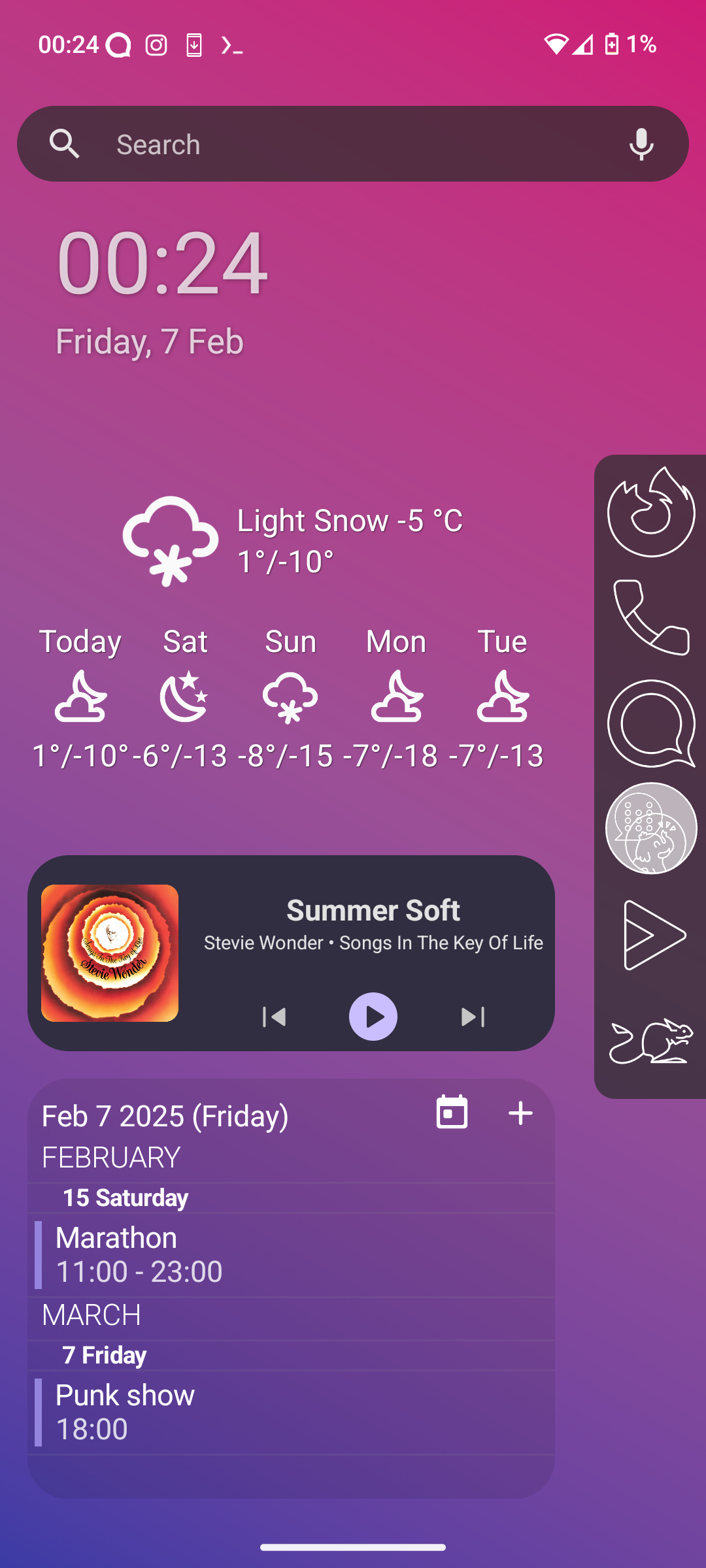

Mull was part of the DIvestOS project, which has recently been discontinued.
For a similarly strengthened fork, I’ve been using IronFox after seeing it recommended on Lemmy.
Languages: Français, English
Pronouns: They/them
Communities:


Mull was part of the DIvestOS project, which has recently been discontinued.
For a similarly strengthened fork, I’ve been using IronFox after seeing it recommended on Lemmy.


They meant pinging your server from another device, I assume.
What error(s) do you get when you try to SSH into your server?
By “can’t access containers”, I assume you mean via devices you’re trying to connect to the server with? Can you still access the stuff you’re running in the containers directly on the server via localhost?
I’ll echo what the other commenter’s have said and you need to give us more info. “I added two containers” is pretty much useless if that’s all we have to go off of to start troubleshooting. More details on what exactly you did, any troubleshooting steps you’ve already tried, what specific errors you get, etc.


I can only assume it’d be a bridge for Nextcloud Talk.
I was having issues getting my Android device to use my local DNS server over VPN, what worked for me was setting it up through RethinkDNS. There’s a setting to prevent DNS leaks by capturing all traffic on port 53 and directing it to the DNS server you set. It doesn’t feel like an elegant solution but hey, it works.
Note, you’ll have to make sure your private DNS setting is off, in the internet section of the system settings.
Putin should be a poutine but with (gasp) mozzarella shreds instead of the proper cheese curds.


I had just turned 14 the first time I smoked weed. I stole some from my parent’s stash after encouragement from a kid I played Team Fortress 2 with and smoked it in the garage when they were gone. I kept on doing this on a weekly to bi-weekly basis throughout my teenage years. My parents only learned about it when I told them a few years ago.
Was 17 the first time I got drunk, in a small garage (or large shed, depending on your perspective) with some friends and some adult supervision in the form of my friend’s parents zonked out in front of the TV in their home.
Other drugs (LSD, coke, but mainly shrooms) I experimented with in my mid 20s.


From a quick Lemmy search, I’ve seen Njalla and 1984.hosting being recommended for these kinds of uses.


I’ve been using Lynx Launcher for a couple of months after being ultimately unsatisfied with the FOSS options I tried. I like how it’s different from a stock home screen but not too different.
Here’s a screenshot of what my main screen looks like, to give an idea.



I’d rather not open ports I don’t have to. I don’t see why I’d have to open a port when Unbound works on my local network and I have access to my local network via Wireguard. I can access a whole slew of services through that one Wireguard port, why wouldn’t Unbound work?
Thanks anyway for trying to help, bud.


I could do that, but I want to avoid opening ports on my router’s firewall apart from the one necessary for Wireguard. I can access all my other stuff through Wireguard, but I can’t wrap my head around why it seemingly can’t access Unbound on the local host.


The reason for the VPN is to have access to my Unbound DNS on my phone from anywhere, not only my local network. If I just wanted to configure the DNS on my local network, I’d set up static IP for my network in Android’s settings and input the DNS server manually. This works fine when I set it up, but like I said I want to use Unbound on my phone anywhere via Wireguard.
I’m not sure what’s the second thing you want me to clarify! Sorry for the confusion, I appreciate you trying to help out :)


Android doesn’t let me add an IP address under private DNS, it needs to be a domain (like dns.quad9.net rather than 9.9.9.9).
I tried adding a quick DuckDNS domain to my reverse proxy towards port 53, where Unbound is listening. It works, as in I can nslookup using the DuckDNS domain on my desktop (or on my phone when not connected to Wireguard) but if I try to set that domain as my private DNS on Android it says it can’t connect, whether or not I’m on my VPN.


I tried this, as well as manually editing the DNS servers on the client side, but whether I use my host’s private local IP or my host’s docker interface IP it doesn’t seem to work.


I think you misunderstood part of my post, because there’s only one VPN tunnel, from the WG client on my phone to the WG server on my laptop.
I want my phone to use the Unbound DNS server, which is hosted locally on the same laptop that runs my Wireguard server.
EDIT: Note, I don’t want to setup the DNS router-side via DCHP because I want to use Unbound to block a bunch of stuff that my roommates use, like Facebook.


When connected through wireguard can you access anything on the local network?
Everything works as expected with Wireguard otherwise, I can ssh into my server or my desktop, and access the other things hosted on my server (although these are all through Docker, which is why I suspect container isolation to be an issue).
Does this issue also happen when you’re on another network and vpning back?
Yup, same issues whether I’m on the local network, the WiFi at work, or on LTE.


Hey sorry for the late reply, I just wanted to say I really appreciate your perspective here! It’s definitely made me simmer down a bit instead of jumping in head first. I’ll try it out for myself and a few friends first before trying to recruit everyone I know :P
Part of why I want to do this is that I do want to learn more about all the stuff you mentioned (except Kubernetes, gosh everytime I look up documentation for it I drown in a swarm of terminology).
As who very much doesn’t work in IT, computer stuff is a fun hobby for me. I can see how assuming the responsibilities for hosting an instance could make it less fun and more work, though.


The smart crib seems particularly dystopian to me. We don’t even need to wait for children to develop enough fine-motor functions to make use of smartphones or tablets, we can start collecting data on them before they even utter their first word!
How long before the smart cribs have ParentAI attached to them? Let the computer raise your child!
There is an airport that still uses Win 3.1 on some computers, don’t recall the name though.
You’re probably remembering articles stating that Southwest Airlines still uses Windows 3.1, they were floating around the tech news sites during the CrowdStrike fiasco a few months back.


I’d say French press ≈ Linux Mint.
Intuitive, easy to use and maintain, but despite the lack of fuss still delivers great results.
Ottawa announced yesterday that they’ll be dropping more than half of federal internal trade barriers.